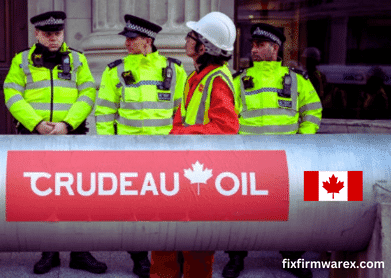where does Canada get its oil 2022
As we continue to face unprecedented levels of oil supply and demand, it is important to be familiar with where our oil comes from. Canada is one of the world’s leading oil producers, and its oil is used in a variety of products and services across the globe. In this post, we will be discussing the different types of oil that are extracted from in Canada, as well as the economic importance of oil production in Canada. We will also be providing a brief history of oil production in Canada, and discussing some of the challenges and opportunities that lie ahead for the oil industry in Canada. Finally, we will provide a list of resources that you can use to learn more about the oil industry in Canada. By understanding where our oil comes from and what challenges and opportunities lie ahead for the industry, you will be better equipped to make informed decisions about how to use and protect this valuable resource.

1. A brief history of oil
Oil has been used by humans for centuries and has played a significant role in our lives. In this post, we’ll take a look at Canada’s oil and where it comes from.
Oil has been used by humans for centuries and has played a significant role in our lives. In this post, we’ll take a look at Canada’s oil and where it comes from.
When we think of oil, we usually think of pumps and miles of pipelines. But oil actually comes from the Earth’s surface. The Earth’s mantle is a layer of the Earth’s crust that’s about 2,000 to 3,000 kilometers thick. It’s made up of solid rock and is divided into several layers.
The mantle contains oil and gas reserves and is thought to be the source of most of the planet’s oil. The oil is released from the rocks when they are heated and compressed. The oil is then drawn up through wells and pipelines.
Canada has several large oil reserves and is a leading producer of oil in the world. Canada also has a large natural gas reserve.
2. Types of oil
There are three main types of oil: natural, synthetic, and bio.
Natural oil comes from plants and animals. Synthetic oil is made from petroleum. Bio oil is made from vegetable oil or animal fat.
Natural oil is the most expensive and is used to make margarine, shortening, and other cooking oils. Synthetic oil is the most common and is used to make gasoline, diesel, and paints. Bio oil is the least common and is used to make biodiesel and lubricants.
3. Where does oil where does Canada get its oil from?
The oil comes from the earth, specifically the ground. The earth’s mantle is a layer of the earth that is made up of different types of rock. Oil is found in rocks that are deep in the earth. Over time, the oil has been trapped in these rocks.
4. The environmental impact of oil
Oil is a vital resource used by humans around the world. It is extracted from the Earth’s surface using different methods, and the environmental impact of each method depends on the type of oil.
Production of oil from shale, for example, has a high environmental impact because of the use of water, chemicals, and energy. Fracking, or hydraulic fracturing, is the most common method used to extract shale oil and gas. This process involves injecting water, chemicals, and sand into the shale to break it open and release the oil and gas.
Oil production from tar sands has a high environmental impact because of the use of water, chemicals, and energy. Tar sands oil is made from bitumen, a thick, black oil that must be processed to become oil. The extraction process uses a lot of water, chemicals, and energy, and the bitumen is transported by pipeline.
offshore oil production has a low environmental impact because it does not use water or chemicals. Offshore oil is extracted using methods such as drilling and fracking.
5. The future of oil
The world is changing and so is the way we get our energy. With so many options available now, it can be hard to know where to turn for help. In this post, we’ll take a look at some of the different sources of oil and see where Canada’s oil comes from.
Canada is home to some of the world’s most important oil reserves. The tar sands are a big part of this, as are the oilsands in Alberta. The tar sands are made up of sand, clay, and bitumen, which is a type of oil. The oilsands are a source of a lot of controversy, as they’re a major source of carbon dioxide. However, they’re also a major source of oil.
Canada also has oil resources in the north. The oil in the north is more difficult to extract, but it’s also more valuable. The oil in the north comes from deposits in the Arctic Ocean.
Canada’s oil comes from many different places, and it’s a major source of energy for the country.
6. What can be done to reduce the environmental impact of oil
Oil is a valuable resource, but it’s important to be aware of the environmental impact it has. In this article, we’ll discuss some of the ways that Canadians can reduce the environmental impact of oil.
One of the most important things Canadians can do is reduce the amount of oil they use. This means using energy more efficiently, choosing low-emitting products, and driving less.
Another way to reduce the environmental impact of oil is to buy Canadian oil. This is oil that has been extracted from Canadian soil and has not been exported.
Finally, Canadians can support renewable energy sources. This means sources of energy that don’t produce greenhouse gases. These sources of energy include solar, wind, geothermal, and hydro.
By doing these things, Canadians can help reduce the environmental impact of oil and make our environment more sustainable.
7. How to reduce your carbon footprint
One of the most pressing environmental concerns today is climate change. While it’s no secret that Canada’s oil comes from sources that contribute to climate change, it’s also true that many people don’t yet understand just how much of an impact our daily choices have on the environment.
Here are four easy ways you can reduce your carbon footprint:
1. Drive less.
2. Switch to renewable energy.
3. Eat organic.
4. Demand transparency from companies that produce oil.
Each one of these tips can make a difference, so start making changes today and help to reduce Canada’s oil dependency.
8. How to reduce your energy consumption
When it comes to energy consumption, there are many things you can do to reduce your reliance on oil. Here are a few tips:
1. Consider using green energy.
There are a number of green energy options available, such as solar and wind power. These are renewable energy sources that don’t use oil to produce energy.
2. Drive less.
If you can, try to drive less. This will help reduce your energy consumption.
3. Switch to green appliances.
If you’re in the market for a new appliance, consider buying one that is powered by green energy. There are a number of options available, such as solar power and wind power.
4. Reduce your consumption of water.
Water consumption can be reduced by using low-flow showerheads, low-flush toilets, and conserving water in general.
5. Look into home energy retrofits.
Home energy retrofits can help you reduce your energy consumption by installing insulation, installing solar panels, and more.
6. Reduce your consumption of food.
Reduce your consumption of meat, dairy, and sugar.
7. Switch to natural cleaning products.
Some natural cleanings products, such as vinegar and baking soda, are environmentally friendly and reduce the amount of energy needed to clean your home.
8. Reduce your consumption of fossil fuels.
You can reduce your consumption of fossil fuels by using public transportation, bike riding, and walking instead of driving.
9. The future of renewable energy
As the world continues to try and find cleaner ways to generate energy, Canada is leading the way when it comes to renewable energy sources. Canada has a long history of being a leader in oil production and a large part of this is due to the country’s vast reserves of renewable energy.
Canada is a world leader in both solar and wind power production and is also a major player in hydro power. Solar and wind power are becoming more and more affordable and are also becoming more reliable as technology improves.
10. Conclusion
Canada is a landlocked country located in North America. It has a population of 36 million people and an area of 5,525,000 square kilometers. Canada is the world’s second-largest producer of oil, after Venezuela. The oil sands are located in the province of Alberta. Canada has been a net oil exporter since the early 1970s. Canada has also been a net oil importer since the early 1990s. The oil sands are a source of tar sands, oil shale, and heavy oil. The oil sands are a source of tar sands, oil shale, and heavy oil.
If you’re like most people, you’ve probably heard a lot about the oil spill in the Gulf of Mexico and the environmental disaster it has caused. In this blog post, we want to provide you with some information about Canada’s oil and how it is sourced. We hope that this information will help you understand the issues surrounding the oil spill and the potential consequences of its continued use. Thank you for reading!
✅Any GSM-Tools Activation & Credits Sale Available
📌Samsung Unlock✅
📌Huawei Unlock✅
📌Nokia Flashing✅
📌Realme Unlock✅
📌iPhone Unlock✅
📌Xiaomi Mi ID✅
Any Problem DM Me on WhatsApp Chat: https://wa.me/+8801913934044
Contact RB Tech Solution:
🟢☎️WhatsApp Chat: https://wa.me/+8801913934044
Facebook▶ https://fb.com/RBTechSolutionbd/
Instagram▶ https://www.instagram.com/mrobinx/
Telegram▶ https://t.me/mrobinx
